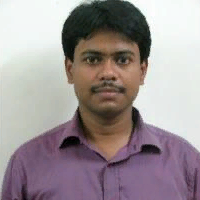International Journal of Image, Graphics and Signal Processing (IJIGSP)
IJIGSP Vol. 9, No. 9, 8 Sep. 2017
Cover page and Table of Contents: PDF (size: 963KB)
An Efficient Embedding Technique in Image Steganography Using Lucas Sequence
Full Text (PDF, 963KB), PP.51-58
Views: 0 Downloads: 0
Author(s)
Index Terms
Discrete Cosine Transformation, Image Steganography, Lucas Sequence, Frequency Domain Data Hiding
Abstract
Image steganography have been observed as one of the useful techniques to prevent unintended users to understand what information has been communicated over the network. Many crucial methods of image steganography include Discrete Cosine Transformation (DCT) based approaches. In this paper an efficient algorithm in image steganography is proposed extending DCT based approaches and incorporating number theory. The existing DCT algorithm is modified to increase randomness in the embedding technique with the help of Lucas sequence specifically. The effectiveness of the proposed method has been evaluated by computing Mean Square Error (MSE) and Peak Signal to Noise Ratio (PSNR). Results show that the proposed method has higher embedding capacity and increases a significant level of security by using Lucas sequence in addition to the advantages provided by existing DCT algorithm.
Cite This Paper
Prithwish Das, Supriyo Ray, Atanu Das,"An Efficient Embedding Technique in Image Steganography Using Lucas Sequence", International Journal of Image, Graphics and Signal Processing(IJIGSP), Vol.9, No.9, pp.51-58, 2017. DOI: 10.5815/ijigsp.2017.09.06
Reference
[1]N D Jambhekar and C A Dhawale. “The Act of Steganography from Ancient Era to Digital Age”, IJCA Proceedings on National Conference on Knowledge, Innovation in Technology and Engineering, NCKITE-2015 (2), pp. 1-4, July 2015.
[2]Singla, Deepak, and Rupali Syal. "Data security using LSB & DCT steganography in images." Int. J. Of Computational Engineering Research Vol. 2, No.2, pp. 359-364, 2012.
[3]Amit Patel, Sai Prasad Kousika VNH “More Secure Way of Sharing Secret Text Message,” Int. J. of Science and Research, , Vol. 5(12), pp. 1563-1568, December 2016.
[4]Jahfar, C. “A Secure Steganography Technique using DCT and Modified RC4.", Int. J. of Interdisciplinary and Multidisciplinary Studies, Vol 2, No.6, pp. 61-65, 2015.
[5]G. Sudha Devi, and K. Thangadurai. "Image Steganography Based on Hybrid Discrete Wavelet Transform with Gabor Filter and Optimized Genetic Algorithm.", Int. J. of Computer Technology and Applications, Vol. 9(25), pp. 507-524, 2016.
[6]Abdullah, Ako Muhammad, and Roza Hikmat Hama Aziz. "New Approaches to Encrypt and Decrypt Data in Image using Cryptography and Steganography Algorithm," image Vol. 143(4), 2016.
[7]Adeel Jawed, Atanu Das, “Security Enhancement in Audio Steganography by RSA Algorithm”, Int. J. of Electronics and Communication Technology, Vol. 6, Issue 1, spl-1, pp. 139-142, Jan - March 2015.
[8]Alharbi, Fahd. "Novel Steganography System using Lucas Sequence." International Journal of Advanced Computer Science and Applications, Vol. 4(4), pp. 52-58, 2013.
[9]L. E. Dickson, “Recurring Series; Lucas' Un, Vn, History of the Theory of Numbers: Divisibility and Primality”, Dover Publications, New York , Vol. 1, pp. 393 -411, 2005.
[10]K. Thangadurai, G. S. Devi, “An analysis of LSB based image steganography techniques”, In Computer Communication and Informatics (ICCCI), 2014 International Conference, pp. 1-4. IEEE, Jan 3, 2014.
[11]Gerami, Parisa, Subariah Ebrahim, and Morteza Bashardoost. "Least significant bit image steganography using particle swarm optimization and optical pixel adjustment." Int. Journal of Computer Applications, Vol. 55, No. 2, 2012.
[12]Rajeev Kumar, Khushil K. Saini, and Satish Chand, “A New Steganography Technique Using Snake Scan Ordering Strategy”, Int. J. of Image, Graphics and Signal Processing, Vol. 6, pp. 25-32, 2013. DOI: 10.5815/ijigsp.2013.06.04.
[13]Seyyed Amin Seyyedi, Nick Ivanov, "Statistical Image Classification for Image Steganographic Techniques", Int. J. Image, Graphics and Signal Processing, Vol. 6, No. 8, pp.19-24, 2014. DOI: 10.5815/ijigsp.2014.08.03.
[14]Avinash K. Gulve, Madhuri S. Joshi, “A High Capacity Secured Image Steganography Method with Five Pixel Pair Differencing and LSB Substitution”, Int. J. of Image, Graphics and Signal Processing, Vol. 7, No. 5, pp. 66-74, 2015. DOI: 10.5815/ijigsp.2015.05.08
[15]Kalpana Sanjay Shete, Mangal Patil, J. S. Chitode, “Least Significant Bit and Discrete Wavelet Transform Algorithm Realization for Image Steganography Employing FPGA”, Int. J. of Image, Graphics and Signal Processing, Vol.8, No.6, pp.48-56, 2016. DOI: 10.5815/ijigsp.2016.06.06.
[16]Suhad Shakir Jaber, Hilal Adnan Fadhil, Zahereel I. Abdul Khalib and Rasim Azeez Kadhim, ―Survey on Recent Digital Image Steganography Techniques‖, Journal of Theoretical and Applied Information Technology, Vol.66, No.3, pp. 714-728, 31st August 2014.


